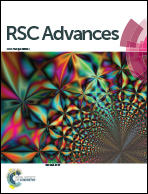Construction of biomolecular sensors based on quantum dots
Abstract
At this post-genomic era, the focus of life science research has shifted from life genetic information to general biofunctions. Thus, the diverse biomacromolecules and biomicromolecules that are embodiments of gene functions become the hotspot of life science research. The major task is to acquire some reliable and efficient routine analytical techniques that can identify and detect these biomolecules. In particular, biomolecular sensors based on quantum dots (QDs) are a major target that can identify and detect biomolecules. This study has the following innovations: previous reviews about QD sensors have focused on their advantages in detection, and the detection targets include not only biomolecules but also non-biomolecules. In comparison, this study is focused on QD sensors targeting biomolecules, and covers not only the QD biosensors that detect biomolecules, but also other types of QD sensors that detect biomolecules. Thus, different from other reviews that are focused on QD sensors targeting biomolecules, we summarize the cons, pros and developing trends of biomolecular sensors from the perspectives of fluorescent QD biomolecular sensors, room-temperature phosphorescence (RTP) sensors, QD nanohybrids, and QD-based electrochemical biosensors. We expect to provide new clues for the development of better biomolecular sensors.


 Please wait while we load your content...
Please wait while we load your content...